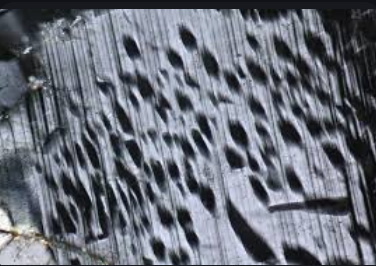Ig Met Textures and Lab Practical Study
1/28
Earn XP
Description and Tags
Igneous and metamorphic textures along with basic information
Name | Mastery | Learn | Test | Matching | Spaced |
|---|
No study sessions yet.
29 Terms
Metamorphic Rock Textures
includes grain size, foliated vs. non-foliated, porphyroblasts, augens, crenulations, gneissic banding, salty cleavage, coronas
Foliated vs. nonfoliated
Foliated rocks exhibit a layered or banded appearance due to the alignment of mineral grains under pressure, while non-foliated rocks do not show such layering and have a more uniform texture.
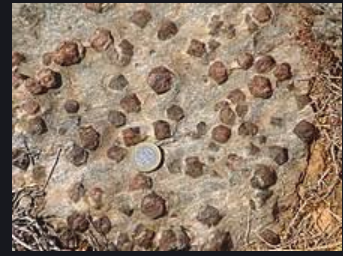
Porphyroblasts
large crystals that form during the mteamorphic proccess
Poikiloblast
a type of porphyroblast that contains inclusions of other minerals within its crystal structure, often formed under high-grade metamorphism.
Augens
large porphyroblasts that have a lens-shaped appearance, often found in metamorphic rocks.
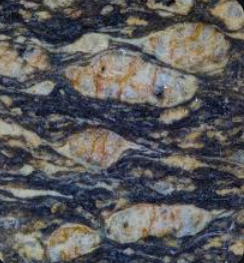
Crenulations
repeated folds in metamorphic rock caused by tectonic forces, indicating deformation and pressure conditions.
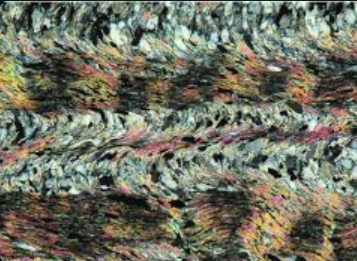
Gnessic banding
a texture in metamorphic rocks characterized by the alternation of light and dark bands due to the segregation of mineral phases during metamorphism.
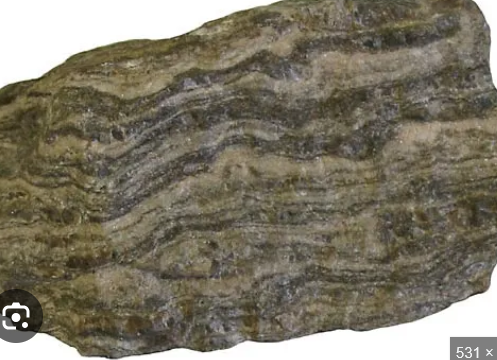
Slaty Cleavage
a type of foliation in metamorphic rocks where the rock breaks along flat, parallel planes, often seen in slate.
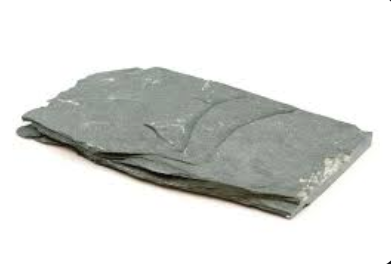
Coronas
textural features in metamorphic rocks formed by reactions at the boundary between minerals, resulting in a rim of new minerals around a mineral core.
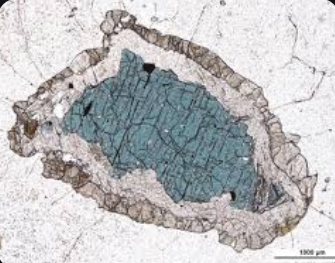
Igneous Rock Textures
Intrusive vs. Extrusive
Aphaneritic
is a texture in igneous rocks where mineral grains are too small to be seen with the naked eye, typically formed from rapid cooling of lava.
Phaneritic
is a texture in igneous rocks where mineral grains are large enough to be seen without a microscope, typically formed from slow cooling of magma.
Pegmatitic
is a texture in igneous rocks characterized by very large mineral grains, often forming in the late stages of magma crystallization.
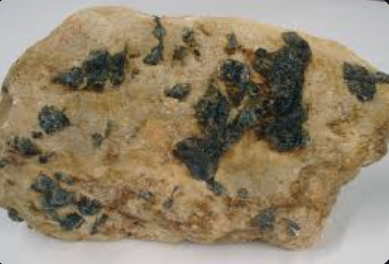
Porphyritic
Larger grain sizes and crystals formed in the cooling process for igneous rocks
Holohaline
is a texture in igneous rocks where all the minerals are glassy
Hypophyaline
is a texture in igneous rocks characterized by having a mix of both crystalline and glassy components, often resulting from rapid cooling of magma.
Holocrystalline
is a texture in igneous rocks where all the minerals are completely crystalline, indicative of slow cooling rates.
Euhedral
is a texture in igneous and metamorphic rocks where crystals are well-formed with distinct faces, typically indicating a slow growth rate in a cavity or space.
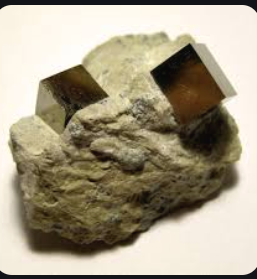
Anhedral
is a texture in igneous rocks where crystals lack well-defined faces, often resulting from growth in a crowded environment or where space is limited.
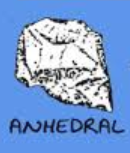
Vesicular
is a texture in igneous rocks characterized by the presence of spherical cavities or vesicles formed by gas bubbles escaping during solidification.
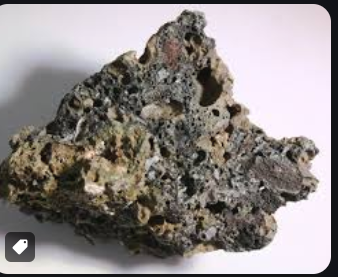
Amygdaloidal
is a texture in igneous rocks that features rounded cavities filled with minerals, typically formed from gas bubbles during solidification that later became infilled. Filled Vesicles.
Trachytic
is a texture in igneous rocks characterized by a parallel arrangement of elongated crystals, usually feldspar, giving a layering or banded appearance.

Zoning
is a phenomenon in igneous rocks where mineral compositions vary in different zones or layers, often reflecting changing conditions during formation.
Graphic
is a texture in igneous rocks that presents a unique intergrowth of quartz and feldspar, resembling a graphic or line drawing.
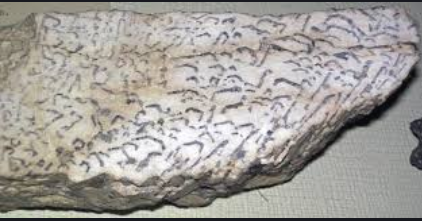
Poikiltic
is a texture in igneous rocks characterized by large crystals of one mineral, typically surrounded by a matrix of smaller crystals, often indicating a diverse cooling history.
Ophitic
is a texture in igneous rocks where large plagioclase crystals are surrounded by a matrix of pyroxene, indicative of specific crystallization processes.
Perthite
is a texture in igneous rocks characterized by the intergrowth of alkali feldspar and plagioclase, often exhibiting a striped or banded appearance. It indicates a complex cooling history.
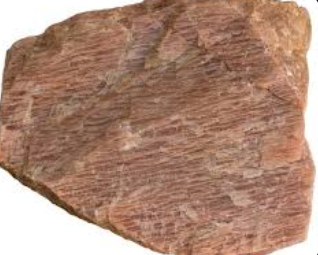
Anitperthite
is a texture in igneous rocks that features the intergrowth of plagioclase and alkali feldspar, often displaying a distinct pattern and indicative of particular crystallization conditions.
